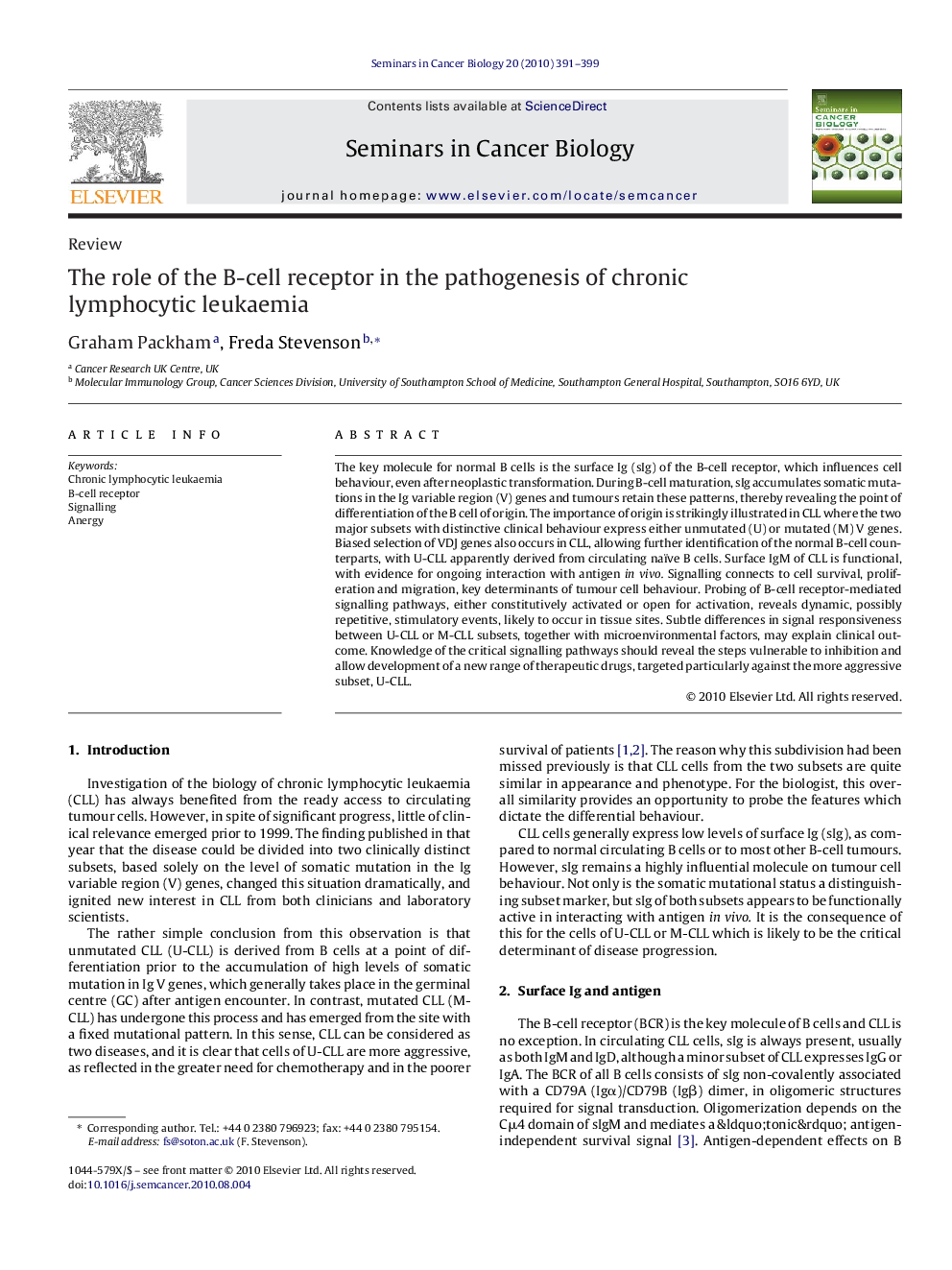| Article ID | Journal | Published Year | Pages | File Type |
|---|---|---|---|---|
| 2023865 | Seminars in Cancer Biology | 2010 | 9 Pages |
The key molecule for normal B cells is the surface Ig (sIg) of the B-cell receptor, which influences cell behaviour, even after neoplastic transformation. During B-cell maturation, sIg accumulates somatic mutations in the Ig variable region (V) genes and tumours retain these patterns, thereby revealing the point of differentiation of the B cell of origin. The importance of origin is strikingly illustrated in CLL where the two major subsets with distinctive clinical behaviour express either unmutated (U) or mutated (M) V genes. Biased selection of VDJ genes also occurs in CLL, allowing further identification of the normal B-cell counterparts, with U-CLL apparently derived from circulating naïve B cells. Surface IgM of CLL is functional, with evidence for ongoing interaction with antigen in vivo. Signalling connects to cell survival, proliferation and migration, key determinants of tumour cell behaviour. Probing of B-cell receptor-mediated signalling pathways, either constitutively activated or open for activation, reveals dynamic, possibly repetitive, stimulatory events, likely to occur in tissue sites. Subtle differences in signal responsiveness between U-CLL or M-CLL subsets, together with microenvironmental factors, may explain clinical outcome. Knowledge of the critical signalling pathways should reveal the steps vulnerable to inhibition and allow development of a new range of therapeutic drugs, targeted particularly against the more aggressive subset, U-CLL.
